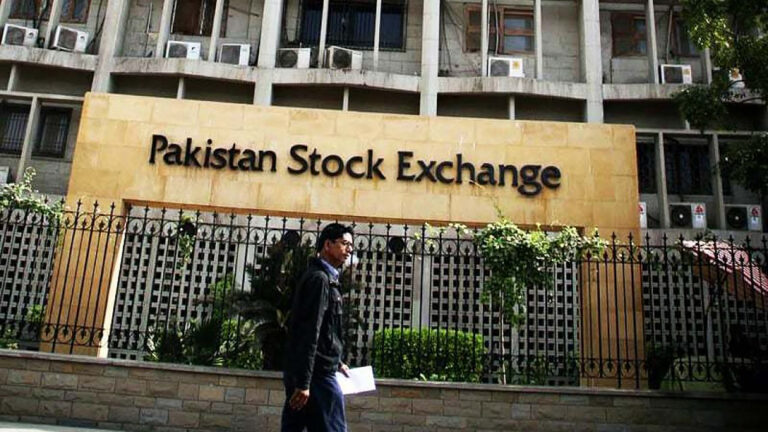
After a brutal year of losses, the stock market looks ready for a recovery. Pakistani equities – as measured by the benchmark KSE-100 index have rallied 20% over the past six months and are up 10% for the calendar year thus far. But, caution analysts at EFG Hermes, an investment bank, that does not necessarily mean that an economic recovery is on its way just yet.
In a wide-ranging analysis that covers several markets ahead of the 2020 calendar year, EFG Hermes sounds a largely positive note when it comes to investing in the Pakistani market, noting several key themes that signal the prospects for profitable investments in the country by equity portfolio investors. But it cautions against optimism just yet, noting that while some sectors may see a recovery this year the broader market is not likely to begin recovering until 2021.
“We expect the performance in 2020 to be driven by the State Bank of Pakistan’s (SBP) monetary stance (a rate cut by the second half of 2020 looks likely), earnings delivery for banks, signs of a bottoming out for cyclicals and capital inflows,” wrote analysts at EFG Hermes.
The main cause for hesitation appears to be the State Bank’s monetary policy and the speed and timing of the central bank ratcheting down interest rates in the economy, which in turn is driven by inflation rates. Analysts at EFG – as well as other investment banks – believe that inflation has not quite peaked yet, which means there is likely some time to go before the SBP begins to decrease the benchmark discount rate from the current 13.25%.
The broader macroeconomic picture appears to be stabilizing, particularly on the current account deficit and the fiscal deficit.
“Pakistan’s macro economy is progressing confidently, with macro stabilisation in the first few months of its newly signed three-year IMF programme. In the first four months of the year, the country’s external adjustment gained further pace, the USD-PKR appreciated, fiscal deficit targets were achieved, and exports showed signs of recovery,” wrote analysts at EFG.
However, there are some troubling signs within those numbers. For instance, while it is true that the current account deficit has turned into a surplus, what is causing that is somewhat of an area of concern.
“The quality of adjustment has been, so far, relatively poor, resting far more on imports compression, which is clearly reflecting weakening domestic demand, rather than export growth. The latter has been, thus far, quite moderate (only 3.4% YTD), though there are a few reasons to believe this should improve gradually, including a pick-up in export volumes,” stated the EFG report.
As a result of that underlying weakness, analysts believe that while the stock market will recover from recent lows, a broad-based recovery will likely take longer than the recent rally might imply. The year 2020 is likely to be marked with a somewhat selective recovery, with some sectors continuing to see a recovery, while others continuing to languish until inflation begins to decline and consumer spending power returns, likely not until at least 2021.
Among the sectors most likely to recover are the consumer cyclical stocks, such as the automobile manufacturers, which have seen their stocks absolutely pummeled over the last few months as auto sales continue their painful and sharp decline this year.
It is unlikely that auto sales will begin to recover until at least the latter half of 2020, according to some analysts. However, the stock may have over-corrected and are currently trading at relatively depressed values.
Valuation is a theme that the EFG analysts believe will drive stock market returns in 2020. Pakistan equities are currently trading at approximately 6 times their expected earnings for the upcoming year. However, the historical average for Pakistani stocks is closer to 7.7 times expected earnings, which implies that a pure reversion to the mean alone would yield a nearly 28% return on stocks.
Another driver of recovery in the market will likely be the return of foreign investors, who have historically been a significant driver of prices in the market. Between 2015 and 2018, foreign investors were net sellers, selling about $1.7 billion more than they bought. Over the past few months, however, that trend appears to be reversing, and foreign investors have become net buyers again.
“Foreigners have been net buyers this year (mostly concentrated in banks and materials). We expect that such flows will pick up in 2020, augmented by the rebalancing in the MSCI frontier markets index in May 2020,” stated the EFG report.
The foreign investor interest in banking stocks is driven in large part due to the rising interest rate environment, when banks are typically able to reprice their loans higher much faster than they have to reprice the rate they pay out depositors. That results in an increase in net interest income (interest income received from borrowers, minus interest paid out to depositors), which in turn drives up profitability and thus stock prices.
The risk, of course, is that the higher interest rates on loans causes many borrowers to start defaulting on their loans, which in turn would increase loan losses for the banks. While EFG highlights that as a risk, current interest rates are significantly lower than they were during the last financial crisis, when interest rates on some loans exceeded 20%.
